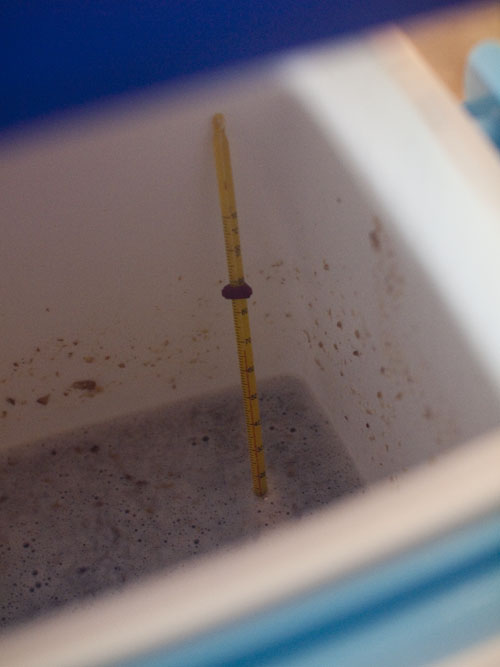Performing A Mash Out?
What Is A Mash Out?
A mash out, put simply is a method of raising the temperature of the mash just before the sparge is started. Usually, the temperature of the mash is raised to around 75-77°C (167-170°F) or thereabouts which does a few things.
First off, all the activity of the enzymes working at converting starches to sugars is halted as the temperature deactivates them. The higher temperature also has the effect of making the mash less viscous and flow more freely.
So Why Perform A Mash Out
To be honest the only reason I would consider a mash out is if I thought there would be problems with the sparge getting stuck or not flowing freely. Using a mash out to fix the ferementable profile and stop any further conversion is in my opinion of minimal effect.
If you sparge continuously then you are going to be raising the temperature of the mash anyway as part of the process. This is what happens in commercial breweries that perform single infusion mashes. They have no way to raise the temperature of the mash except when running the sparge which will be with significantly hotter liquor at around 77°C (170°F)
So how do you know if you’re going to have issues sparging freely. It’s quite simple and something you should be able to tell before you even begin brewing. If there is a large quantity, say more than 20-30% wheat or oats for example the sparge will be more liable to getting stuck in part because they have no husks to act as a filter. Raising the temperature with a mash out increases the viscosity of the mash and frees everything up.
Another reason to use a mash out would be if you have a particularly thick mash i.e. the grain to water ratio is close. A thicker mash increases the concentration of sugars and consequently increases the viscosity making the sparge difficult. Similarly if for some reason over the course of the mash you lose a lot of temperature it has the same effect.
A good analogy of this would be to compare the thickness of the mash to oil in an engine. When the engine is running and heating up the viscosity of the oil changes making the oil flow more freely.
Performing A Mash Out
If you can apply direct heat to the mash tun then it’s simply a case of doing so and stirring the mash to avoid creating hotspots until you reach the desired mash out temperature around 75-77°C (167-170°F).
If you cannot apply direct heat to the mash tun then an addition of hot water is the simplest way of achieving mash out temperature. Take a look at the strike water temperature article and calculate the addition of water needed to raise the temperature as desired. A more complex version of this would be to do a decoction but frankly unless doing a decoction mash is more effect than it’s worth.

